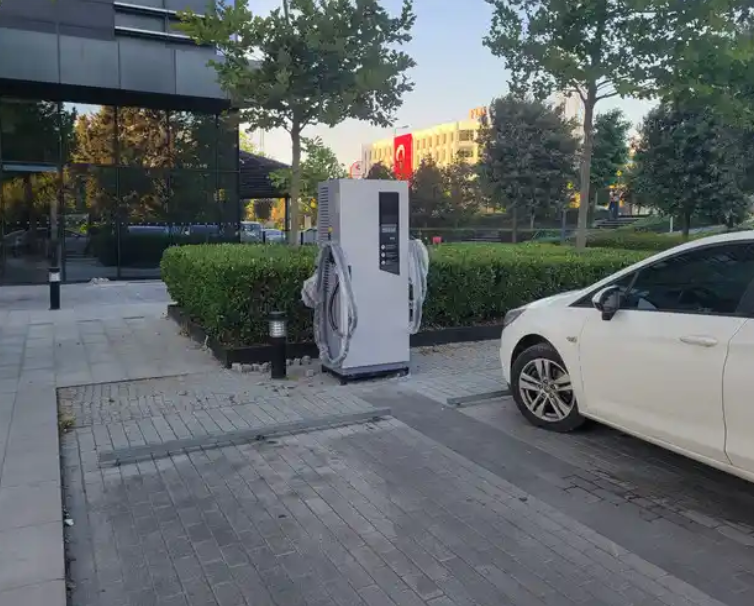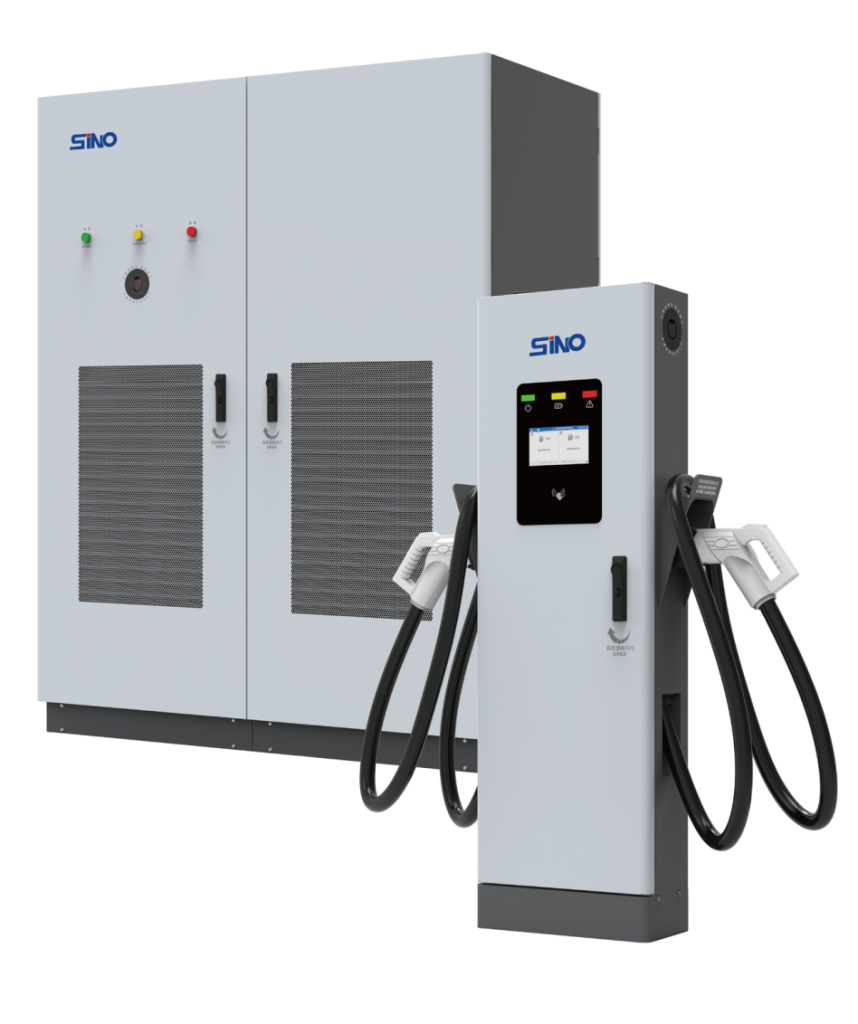
Products
Fast, Reliable, Everywhere

Solutions
Efficient, Innovative EV Charging Solutions.
News
We are committed to the innovation and application of EV charging.
As electric vehicles (EVs) become more popular, more EV owners are focusing on how to efficiently charge their vehicles. We are dedicated to providing you with the most authoritative and practical advice to help you easily install and use EV chargers. This blog post will detail the knowledge you need to know before installing an EV charger, as well as common problems and usage tips, to ensure you can easily master and use EV chargers.
Before selecting the EV charger that suits your needs, it is crucial to understand the characteristics of different charging levels. Based on your usage needs and budget, you can choose from the following charging levels:
| Charger Type | Circuit Required | Installation Conditions | Charging Duration | Installation Locations | Practicality | Safety |
| Level 1 Charger | 120V home outlet | No special installation conditions, can be directly plugged into a standard household outlet | Charges about 4-5 miles per hour | Home garages, parking spaces | Suitable for overnight charging or long-term parking | Basic safety, ensure the outlet is in good condition |
| Level 2 Charger | 240V circuit | Requires professional electrician installation, needs 240V power supply | Charges about 20-25 miles per hour | Home garages, commercial parking lots, office building parking lots | Mainstream choice for daily use | High safety, requires professional installation |
| Level 3 Charger (DC Fast Charging) | 480V three-phase power | Requires complex electrical infrastructure and professional installation, usually requires government or professional agency approval | Charges to 80% in 20-30 minutes | Public charging stations, service areas, commercial center parking lots | Suitable for quick energy replenishment needs | Very high safety, requires professional installation and maintenance |
Considering all factors, most car owners choose to install a Level 2 charger at home because it provides an ideal balance between charging speed, installation cost, applicable locations, practicality, and safety. It meets daily usage needs without incurring excessive installation and maintenance costs, making it the best choice for EV charging. While the installation and equipment costs of Level 3 chargers are higher, their quick charging advantages are indispensable in specific scenarios, such as rapid charging, frequent use, or special application scenarios.
The cost of installing an EV charger is a common concern for every car owner. Indeed, the initial investment may seem high. However, in the long run, choosing high-quality materials and equipment not only ensures safety but also saves future maintenance and replacement costs.
For example, when installing an EV charger at home, we recommend using copper wires. This is because copper wires have minimal expansion and contraction during use, better accommodating current changes, thereby ensuring the longevity and safety of the charging equipment. Poor quality materials may lead to poor contact, overheating, and even fire hazards after prolonged use.
The equipment cost of wired Level 2 chargers ranges from $500 to $2,000, depending on the brand and power rating. Installation costs range from $300 to $3,300, depending on the complexity of the installation work and any additional electrical work needed to support the charger, such as panel upgrades or load management equipment.
Although initial costs are higher, it is worth noting that there are many incentives at the federal and state levels to help alleviate financial burdens. Additionally, be sure to consult local utility companies and any other regional authorities to determine if you qualify for additional savings. These incentives can help offset the initial investment in high-quality equipment.
The best way to ensure the safety of EV charging equipment is to only purchase equipment that has been safety certified. Look for certifications from independent testing organizations such as Underwriters Laboratories (UL), Electrical Testing Laboratories (ETL), TUV Rheinland Group (TUV), or the Canadian Standards Association (CSA). These certification marks indicate that the equipment has undergone rigorous testing and meets safety and performance standards.

Therefore, while choosing high-quality materials and equipment may increase initial costs, these investments will provide you with a more reliable and efficient charging experience in the long run. You can avoid frequent repair and replacement costs and ensure the safety of your family and property. Thus, we always recommend selecting high-quality materials and equipment for installation to ensure that car owners can enjoy the convenience of electric vehicles with peace of mind.
Before installing an EV charger, it is essential to conduct site evaluation and planning. Determine the best installation location, ensure adequate power supply, and consider future expansion needs. Professional installation services can help you avoid potential issues and ensure a smooth installation process. Here is a detailed step-by-step guide:
1.Evaluate the Installation Area
1.1 Check Power Supply

2.Choose the Best Installation Location
2.1 Close to the EV Parking Spot
2.2Consider Weather and Safety
3.Plan Cable Layout
3.1 Design the Path
3.2 Avoid Hazards and Blockages
3.3 Safe Installation
4.Best Practices
4.1 Labels and Signage
4.2 Regular Inspection and Maintenance
By following these steps, you can ensure that the EV charger is installed in the optimal location, and that the cable layout is safe and effective, avoiding any potential hazards or blockages. This not only improves charging efficiency but also ensures the safety of your family and property.
Avoiding overcharging the EV battery is key to protecting battery life. Using a smart EV charger can automatically stop charging to prevent overcharging. Additionally, follow the manufacturer's charging recommendations and regularly check the battery status.

Driving slowly can effectively save energy and extend driving range. In the city, avoid sudden acceleration and hard braking to reduce energy consumption.
To extend battery life, it is recommended not to charge the battery to 100% every time. Generally, maintaining a charge level between 20%-80% is ideal.
Environmental temperature significantly affects EV charging efficiency. Extreme high or low temperatures can impact charging speed and battery performance. Try to charge at optimal temperatures and avoid parking the vehicle for extended periods in extreme temperatures.
From the data chart, it is evident that environmental temperature significantly affects EV charging efficiency. Here are the charging efficiencies at different temperatures:

From the chart, it is clear that the optimal charging efficiency for EVs occurs around 20°C. Charging efficiency significantly drops in low (-10°C) and high (40°C) temperatures. Therefore, EV owners should try to charge in optimal environmental temperatures to ensure charging efficiency and battery life. Understanding the impact of temperature on charging efficiency can help users better plan their charging times and locations, avoiding the adverse effects of extreme temperatures on the charging process.
By following these simple tips, you can significantly improve the battery life and performance of your EV without worrying about battery degradation.
The future of electric vehicle (EV) charging is full of hope and confidence. As the adoption of electric vehicles continues to rise, the demand for reliable and convenient charging solutions will keep increasing. Installing and using EV chargers not only offers unparalleled convenience and enhances the overall EV ownership experience but also provides peace of mind for users.
